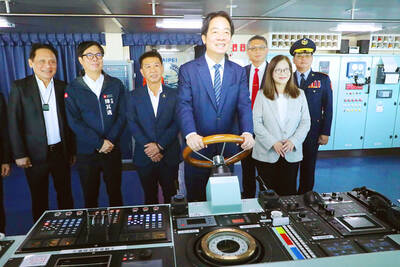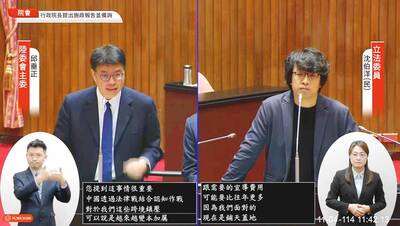While the rest of the world reels from the global economic crisis, China is using its deep pockets to bolster its position in strategically vital Central Asia, analysts say.
In recent months Beijing has been on a spending spree among the Central Asian states to its west, handing over a US$10 billion loan to cash-strapped Kazakhstan last month and stepping up construction projects and investment from Ashgabat to Bishkek.
Although experts say the recent Chinese splurge is part of a long-term strategy for the region, few question the fact that Beijing’s hand has never been stronger, something it is well aware of.
“It’s one of the richest countries in the world and of course in light of the crisis they’re going to play the game,” said Konstantin Syroezhkin, a senior research fellow at the Kazakhstan Institute for Strategic Studies.
“Everyone else is in such a sorry economic state and China has money to invest,” he said.
A China expert at Almaty’s Institute for Economic Strategies, Adil Kaukenov, revealingly recalls a conversation with a Chinese counterpart who told him: “We’re walking all over the world with suitcases stuffed full of money, because we have to spend it.”
China’s investment pattern in Central Asia fits with a broader strategy that has seen Beijing snap up assets across the world in a drive to convert its massive foreign currency reserves into concrete holdings.
But for nearly two decades since the 1991 Soviet collapse, Beijing has also shown special interest in using its pocketbook to secure stability along its Central Asian border, funding infrastructure projects and investing in key sectors.
Of primary concern for Beijing is the long, porous border between Kazakhstan and China’s Xinjiang Province, Kaukenov said.
Xinjiang is home to a Muslim Uighur ethnic group feared by Beijing for its supposed separatist views — a tension critics say has resulted in human rights abuses by the region’s authorities.
“China has always, since the collapse of the Soviet Union, been extremely worried that terrorists from Xinjiang would find support from the governments of Central Asia,” Kaukenov said.
Multi-million dollar infrastructure projects in Tajikistan and Kyrgyzstan — both wracked by chaos and disorder since the fall of Soviet Communism — are prime examples of China’s strategy.
Electrification and road projects improving the quality of life in these impoverished regions make them less likely to spawn extremists, but also open up their markets to Chinese goods — a win-win situation for Beijing.
Nargis Kassenova, a professor at the elite Kazakhstan Institute of Management, Economics and Strategic Research, has researched Chinese investment and development in Kyrgyzstan and Tajikistan and detects impressive gains for Beijing.
“Tajikistan is so isolated, and to see all these Chinese companies there and the investment in Tajikistan, I was pretty surprised,” she said.
“In pretty much all spheres now you have Chinese goods, Chinese companies ... The level of penetration is quite impressive,” she said.

CALL FOR SUPPORT: President William Lai called on lawmakers across party lines to ensure the livelihood of Taiwanese and that national security is protected President William Lai (賴清德) yesterday called for bipartisan support for Taiwan’s investment in self-defense capabilities at the christening and launch of two coast guard vessels at CSBC Corp, Taiwan’s (台灣國際造船) shipyard in Kaohsiung. The Taipei (台北) is the fourth and final ship of the Chiayi-class offshore patrol vessels, and the Siraya (西拉雅) is the Coast Guard Administration’s (CGA) first-ever ocean patrol vessel, the government said. The Taipei is the fourth and final ship of the Chiayi-class offshore patrol vessels with a displacement of about 4,000 tonnes, Lai said. This ship class was ordered as a result of former president Tsai Ing-wen’s (蔡英文) 2018

‘SECRETS’: While saying China would not attack during his presidency, Donald Trump declined to say how Washington would respond if Beijing were to take military action US President Donald Trump said that China would not take military action against Taiwan while he is president, as the Chinese leaders “know the consequences.” Trump made the statement during an interview on CBS’ 60 Minutes program that aired on Sunday, a few days after his meeting with Chinese President Xi Jinping (習近平) in South Korea. “He [Xi] has openly said, and his people have openly said at meetings, ‘we would never do anything while President Trump is president,’ because they know the consequences,” Trump said in the interview. However, he repeatedly declined to say exactly how Washington would respond in

WARFARE: All sectors of society should recognize, unite, and collectively resist and condemn Beijing’s cross-border suppression, MAC Minister Chiu Chui-cheng said The number of Taiwanese detained because of legal affairs by Chinese authorities has tripled this year, as Beijing intensified its intimidation and division of Taiwanese by combining lawfare and cognitive warfare, the Mainland Affairs Council (MAC) said yesterday. MAC Minister Chiu Chui-cheng (邱垂正) made the statement in response to questions by Democratic Progressive Party (DPP) Legislator Puma Shen (沈柏洋) about the government’s response to counter Chinese public opinion warfare, lawfare and psychological warfare. Shen said he is also being investigated by China for promoting “Taiwanese independence.” He was referring to a report published on Tuesday last week by China’s state-run Xinhua news agency,

‘ADDITIONAL CONDITION’: Taiwan will work with like-minded countries to protect its right to participate in next year’s meeting, the foreign ministry said The US will “continue to press China for security arrangements and protocols that safeguard all participants when attending APEC meetings in China,” a US Department of State spokesperson said yesterday, after Beijing suggested that members must adhere to its “one China principle” to participate. “The United States insists on the full and equal participation of all APEC member economies — including Taiwan — consistent with APEC’s guidelines, rules and established practice, as affirmed by China in its offer to host in 2026,” the unnamed spokesperson said in response to media queries about China putting a “one China” principle condition on Taiwan’s